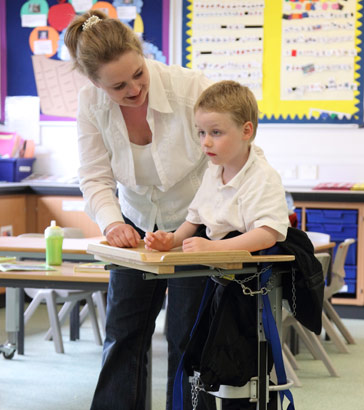acceptable risk?

Although it is important not to put children with SLD/PMLD/CLDD at risk, it is also important not to limit their ability to achieve and enjoy life. An agreement about what risk is acceptable needs to be discussed between the child or young person, their family and school senior leaders and staff.
If learners are only exposed to that which is safe and predictable, they
will never have the experience of taking risks and coping with the unpredictable,
which in turn further disadvantages them in adapting to and coping with
change in their everyday lives.
Dee, 2004 (in Rose, 2005)
[A] 'Person Centred Approach to Risk'...has a more balanced approach
to risk, having an inbuilt assumption that the purpose of any risk assessment
is just as much about the happiness of the person, their family and the
community as it is about their safety.
Neill et al, 2008
Disabled children and young people should be able to participate in all
aspects of community life and it may be necessary for staff and carers
to carry out intimate care procedures in a variety of settings.
Lenehan et al, 2004
...an integrated balance between 'positive risk taking' around the values
of autonomy and independence and a policy of protection for the person
and the community based on minimising harm.
Helen Sanderson Associates, 2007
We want to promote a culture of choice that entails responsible, supported
decision-making... within the right circumstances, risk can be beneficial,
balancing necessary levels of protection with preserving reasonable levels
of choice and control.
Department of Health, 2007
A risk assessment is...a careful and systematic examination of what can
cause harm and how this can be prevented. It involves an identification
of the hazards present and an estimate of the risk involved. An assessment
will take into account the precautions already in place, and the actions
that can be taken to reduce risk further. It is important to appreciate
that risk may not be fixed, for example where learners present varying
levels of risk because of fluctuating health.
Rose, 2005
In terms of the law...staff cannot claim they were unaware of a risk.
They must prove that they assessed all relevant areas of risk and took
adequate steps to minimise it and their actions were 'reasonably practicable'.
Lenehan, 2004
A school's risk assessment policies will lay out risk assessment criteria,
protocols and procedures in relation to children
with
SLD/PMLD/CLDD.
Include others, such as the class team, health professionals (eg the
school nurse, therapists, and others), families and the child or young
person if appropriate when compiling risk assessments.
Taking a social model of risk, rather than a medical mode, focuses adults
on overcoming organisational barriers rather than on the child or young
person's impairment
Rose, 2005.

Areas of assessment to consider may include (Rose, 2005):
- Medical (including medication, continence).
- Mental health (including psychological and emotional needs).
- Social (including behavioural needs).
- Physical (including mobility and physical coordination).
- Sensory (including hearing, sight and speech).
- Independence (including social vulnerability).
- Other (this might include ethnicity, home circumstances and so on).

Lenehan, C., Morrison, J. and Stanley, J. (2004) The Dignity of Risk:
A practical handbook for professionals working with disabled children and
their families. London: Council for Disabled Children/Shared Care.
Rose, C. (2005) I don't want to sue anyone...I just want to get a life:
Inclusive Risk Assessment (Guidance for Colleges and Other Post-16 Education
Providers on Implementing the Disability Discrimination Act). London: Learning
and Skills Development Agency.